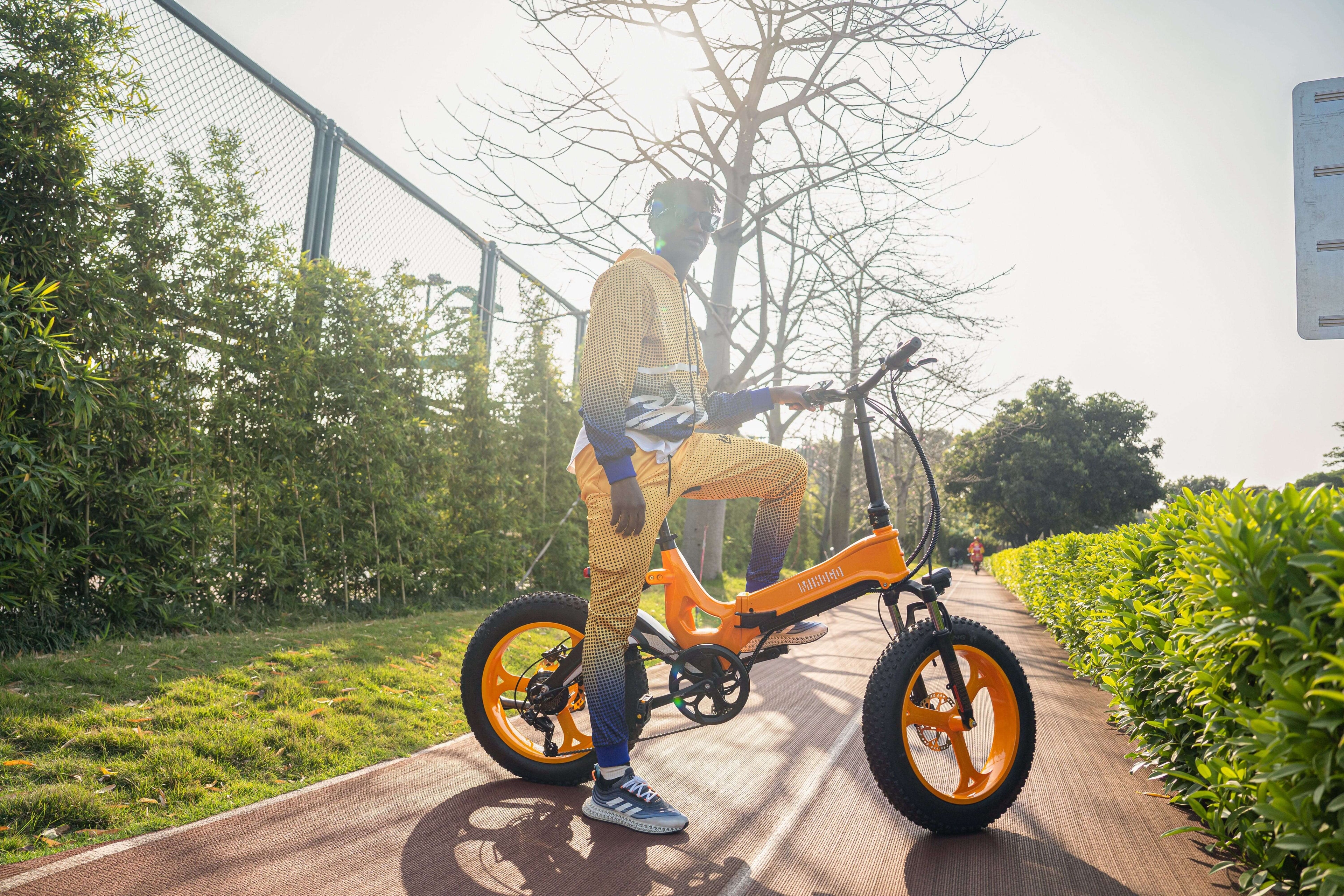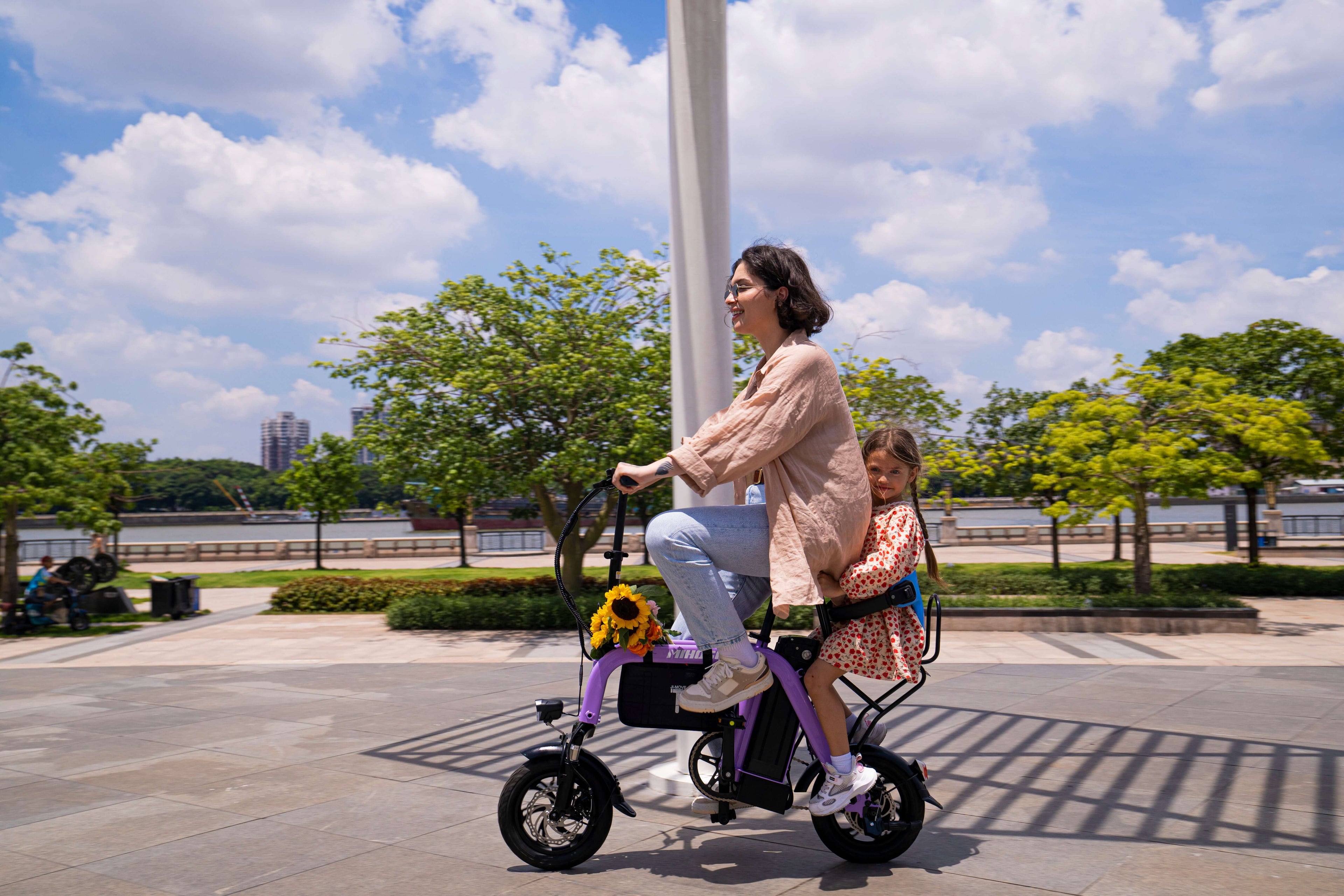Why Choose E-Bikes for Your Trans-America Journey?
Breaking Down Barriers to Cross-Country Cycling
Traditional cross-country cycling demands exceptional fitness and months of preparation. Electric bikes revolutionize this experience by reducing physical strain while maintaining the authentic cycling adventure. E-bikes have seen a surge in popularity—and for good reason. Electric pedal-assist motors reduce the physical effort required to ride, breaking down one of the biggest barriers to cycling.
Key advantages of e-bike touring:
- Extended daily mileage with less fatigue
- Easier navigation of challenging terrain and elevation changes
- More time to enjoy scenery instead of struggling with climbs
- Ability to maintain consistent speeds across varied terrain
- Enhanced safety through better traffic integration
The Modern Trans-America Trail Experience
The route runs from the Pacific coast in Astoria, Oregon to the Atlantic coast in Yorktown, Virginia, passing through ten states. Today's e-bike technology makes this iconic journey more accessible than ever, with improved battery ranges and charging infrastructure supporting long-distance touring.
Choosing Your Mihogo E-Bike for Coast-to-Coast Adventures
Mihogo Air750 Max: The Long-Distance Champion
Perfect for: Experienced cyclists seeking maximum range and performance
The Mihogo Air750 Max stands as our flagship model for serious coast-to-coast adventures. With its carbon fiber construction and impressive 121-mile range, this powerhouse handles the demanding daily mileages typical of Trans-America touring.
Key specifications:
- 750W motor for climbing steep mountain passes
- 121-mile range reduces charging anxiety
- 25 MPH top speed for efficient highway shoulder riding
- Carbon fiber frame keeps weight minimal for easier handling
- Designed for riders 5'7" to 6'10"
Mihogo ONE Utility E-Bike: The Versatile Workhorse
Perfect for: Riders prioritizing cargo capacity and extended range
When your Trans-America adventure requires carrying extensive gear, camping equipment, or supplies, the Mihogo ONE Utility E-Bike delivers unmatched capability. Its 167-mile range leads our lineup, ensuring you can tackle the longest daily stages without range anxiety.
Key specifications:
- 750W motor powers through challenging terrain with full touring load
- 167-mile range - our longest-distance model
- 25 MPH assisted speed maintains efficient touring pace
- Utility design accommodates panniers, camping gear, and supplies
- Accommodates riders 5'7" to 6'10"
Mihogo RX 2.4: The Compact Tourer
Perfect for: Space-conscious travelers and urban-to-trail transitions
The Mihogo RX 2.4 offers unique advantages for coast-to-coast touring, particularly for riders who need to transport their bike via car, train, or plane during portions of their journey. Its folding design provides unmatched versatility.
Key specifications:
- 500W motor handles moderate terrain efficiently
- 40-mile range suitable for supported touring or frequent charging stops
- 23 MPH top speed perfect for mixed urban and rural riding
- Compact folding design simplifies transport logistics
- Fits riders 5'3" to 6'5"
Mihogo Mini: The Budget-Friendly Option
Perfect for: First-time e-bike tourists and budget-conscious adventurers
Don't let the Mihogo Mini's compact size fool you - this efficient e-bike offers surprising capability for coast-to-coast touring, especially for riders planning supported tours or those comfortable with more frequent charging stops.
Key specifications:
- 350W motor provides reliable assistance for moderate terrain
- 62-mile range works well with strategic charging planning
- 21.9 MPH top speed efficient for relaxed touring pace
- Lightweight design easier to handle and transport
- Accommodates riders 5'1" to 6'4"
Essential Trans-America E-Bike Route Planning
Understanding the Classic Route
The lush, green western side of the Cascade Mountains is a startling contrast to the dry terrain you'll be riding into after McKenzie Pass. Planning your daily stages around charging infrastructure becomes crucial for e-bike success.
Major route sections:
- Oregon Coast to Cascades: Moderate terrain with good charging infrastructure
- Central Oregon High Desert: Limited services requiring careful battery management
- Rocky Mountain Region: Steep climbs demanding maximum motor assistance
- Great Plains: Long distances with consistent headwinds
- Appalachian Mountains: Technical terrain requiring reliable braking and motor performance
Charging Strategy and Infrastructure
Daily charging planning:
- Target 60-80% of your bike's maximum range for daily stages
- Identify charging points every 30-40 miles as backup options
- Carry portable charging equipment for emergency situations
- Plan overnight stops with guaranteed electrical access
Recommended charging locations:
- RV parks and campgrounds (most reliable)
- Libraries and community centers
- Restaurants and cafes (ask permission)
- Fire stations and emergency services (often accommodate touring cyclists)
Weather and Seasonal Considerations
The wind blows almost constantly on the plains, and it can whip up huge clouds of dust, particularly on the high plains of Colorado. E-bike battery performance varies significantly with temperature and weather conditions.
Optimal timing:
- Late spring to early fall for best weather and charging reliability
- June through September offers warmest temperatures for optimal battery performance
- Avoid winter months due to reduced battery efficiency and harsh weather
Training and Preparation for Your E-Bike Adventure
Physical Conditioning
While e-bikes reduce physical demands, coast-to-coast touring still requires significant fitness preparation:
Training timeline (3-4 months minimum):
- Month 1: Build base fitness with regular 20-30 mile rides
- Month 2: Increase to 40-50 mile rides with your planned daily gear load
- Month 3: Practice back-to-back long days (60+ miles)
- Month 4: Fine-tune equipment and complete several multi-day tours
Equipment and Gear Selection
Essential e-bike specific equipment:
- Multiple charging cables and adapters
- Portable battery pack for emergency charging
- Basic electrical repair tools and spare fuses
- Waterproof battery protection for wet weather riding
- Digital tire pressure gauge for optimal efficiency
Mechanical Preparation
Pre-departure checklist:
- Complete professional tune-up and safety inspection
- Test all electrical systems under load
- Practice basic repairs: flat tires, brake adjustments, chain maintenance
- Verify warranty coverage and locate authorized service centers along your route
Navigating Challenges: Weather, Terrain, and Logistics
Mountain Pass Strategies
You begin a long climb to crest the Continental Divide at Hoosier Pass, 11,542 feet, up amongst snow-covered peaks. High-altitude riding presents unique challenges for e-bike systems.
High-altitude considerations:
- Battery performance decreases in cold temperatures
- Motor efficiency may be reduced in thin air
- Weather changes happen rapidly at elevation
- Mechanical issues are more serious when far from services
Great Plains Wind Management
Carrying extra water is a good idea here – this is hot, barren country. You might have to do some early morning and early evening riding to escape the midday heat.
Wind riding strategies:
- Early morning departure typically offers calmer conditions
- Adjust assistance levels to compensate for headwinds without draining battery
- Group riding when possible to share wind resistance
- Route flexibility to take advantage of favorable wind directions
Safety and Emergency Preparedness
Communication and Navigation
Essential technology:
- Satellite communication device for remote area emergencies
- GPS navigation with offline maps and route files
- Emergency contact information shared with support network
- Daily check-in protocol with family or friends
Mechanical Emergency Planning
Critical spare parts:
- Extra battery or high-capacity portable charger
- Tire repair kit with multiple tubes and patches
- Basic tool kit including electrical multimeter
- Emergency contact list for bike shops along your route
Community and Support Networks
Connecting with Fellow Cyclists
Many of the cafes, restaurants, and overnight accommodations along the route have kept journals consisting of entries written by cross-country riders from previous years. The touring community provides invaluable support and information sharing.
Online communities:
- Adventure Cycling Association forums
- Facebook Trans-America touring groups
- Warmshowers hosting network
- Local cycling club connections
Professional Support Services
Tour company options:
- Supported tours handle logistics and mechanical support
- Self-guided services provide route planning and emergency backup
- Gear transport services reduce daily carrying load
Budget Planning and Cost Considerations
Total Adventure Investment
Typical coast-to-coast e-bike tour costs:
- E-bike and equipment: $2,000-4,000 (depending on Mihogo model selected)
- Camping and accommodation: $20-80 per night
- Food and supplies: $30-50 per day
- Emergency fund: $1,000-2,000 for unexpected expenses
Money-Saving Strategies
Cost reduction tips:
- Camping versus hotel stays saves $40-60 per night
- Grocery store meals instead of restaurant dining
- Group travel shares costs and increases safety
- Off-season timing reduces accommodation costs
Making Your Trans-America E-Bike Dream Reality
Getting Started Today
Your Trans-America e-bike adventure begins with selecting the right Mihogo model for your specific needs and fitness level. Whether you choose the long-range Air750 Max for maximum capability or the versatile RX 2.4 for compact convenience, proper planning transforms this monumental challenge into the adventure of a lifetime.
Essential First Steps
- Choose your Mihogo e-bike based on daily range requirements and terrain preferences
- Begin training program at least 4 months before departure
- Connect with the touring community for route advice and support
- Plan your route timing around weather and personal schedule
- Prepare financially for the 2-3 month adventure investment
External Resources and Further Reading
For detailed route information, visit the Adventure Cycling Association's TransAmerica Trail guide, which provides comprehensive maps and services information. The Trans Am Bike Race offers insights into the challenges and rewards of coast-to-coast cycling at the highest level.








